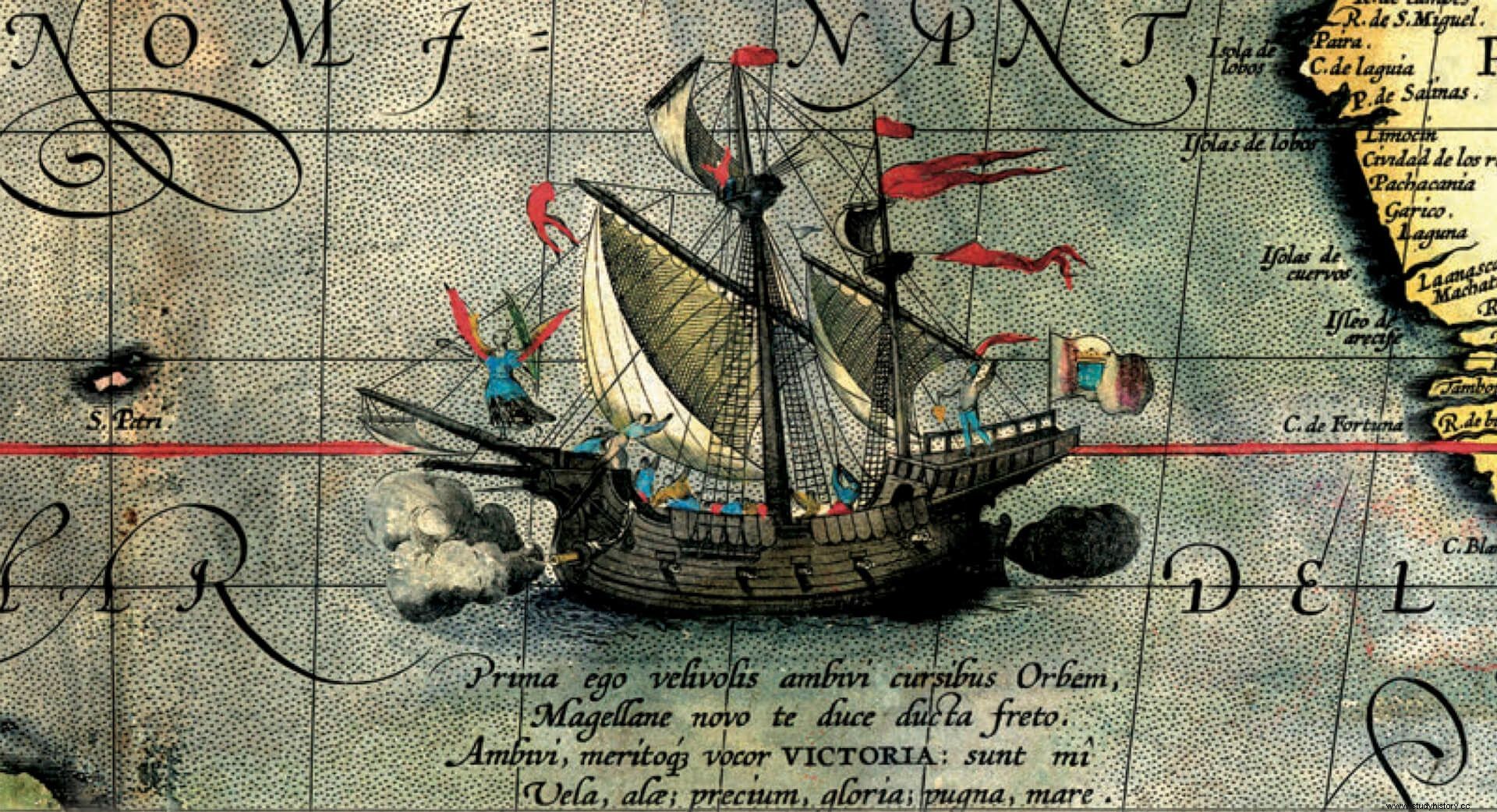
Coinciding with the beginning of this extraordinary company, this 2019 begins the commemoration of the V Centenary of the first circumnavigation of the earth , a journey into the unknown that had to face countless difficulties to be carried out even before his departure. We already gave an account of the tribulations of Magellan, Elcano, their ships and their crews in our recent Desperta Ferro Especiales No. XVIII:The Spanish Armada (II). The age of discoveries , but such a unique project required prior preparation and planning to match.
The preparation of a navy to circumnavigate the world
This is how Magellan recounted his experience preparing his expedition just fourteen days after leaving the Sevillian port. An experienced sailor like him shouldn't have encountered so many problems, but a voyage of exploration required extraordinary logistics , as extraordinary were the circumstances that surrounded its gestation:the influence of a powerful character of the court (Fonseca), the pre-eminence of an institution (Casa de Contratación), the impetus of a protagonist (Magallanes) and the rivalry between two kingdoms:the crown of Castile and Portugal (see Organizing the discoveries. Planning and logistics of exploration trips in Desperta Ferro Especiales No. XVIII:The Spanish Armada (II). The age of discoveries ).
The Portuguese Ferdinand Magellan had served his king well Manuel I in the confines of his overseas empire for several years, but the monarch never wanted to grace or reward him as he considered, and caused the sailor to go to serve another lord. Magellan owned a farm in Galicia, where he met his compatriot, the cosmographer Ruy Faleiro, who convinced him to travel to Seville at the end of 1517. There they would make contact with the Portuguese community of exiles in the city and with those around the city. Casa de Contratación, highlighting that of his future father-in-law, Diego Barbosa, lieutenant of the alcázares and shipyards of Seville, who would put him in contact with the almighty president of the Council of the Indies, Bishop Fonseca.
A quarter of a century ago the Treaty of Tordesillas had divided the known world –and the world to be known– in two by means of a demarcation line that imaginarily crossed the Atlantic (see The origin of the age of discoveries ). Towards the east, the Portuguese possessed the sovereignty that allowed them to skirt the African coast to reach the Moluccas. The Castilians needed a route that would take them west to those spice islands. Magellan believed he could reach them while respecting the Treaty of Tordesillas and Fonseca, who had already helped organize other expeditions with the same objective, was very interested in the company.
The royal permission of Carlos I was obtained in Valladolid. He exposed the idea of him to the monarch through various world maps, slaves speaking the Moluccan language, and a richly painted globe of the world, evidence intended to impress and convince the young king. On March 22, 1518 the Valladolid Capitulations were signed where Magellan and Faleiro received the order to send a fleet of five ships that the monarch himself would order to arm:"the two of one hundred and thirty tons each and another two of ninety and another of sixty barrels - the carpenters finally gave the figures of:the Victoria, 85 barrels; the Conception, 90; the San Antonio, 120; the Trinidad, 110, and the Santiago, 75 barrels–, supplied for two years and carrying two hundred and thirty four people [...]”, which finally were 238.
The enrollment of the crew was subject to pressure from the Portuguese, who viewed the expedition with suspicion, and Charles I would have wanted foreigners not to participate; however, it was not easy to find sailors willing to embark on such an adventure, and those who did often fled with advance pay. Magellan began to recruit Portuguese as well, but the Castilian authorities took a dim view of these men and pressured Magellan to enlist other crew members. With great difficulty it was possible to fill the quota of the boats counting on Italians, French, Germans, Bretons and, of course, Portuguese. On the other hand, there did not seem to be an impediment for a sailor and small shipowner from Guetaria, Juan Sebastián Elcano , who, harassed by debts and justice, landed in Seville around 1518 with the more than probable intention of going to the Indies and for whom destiny reserved great hardships but greater glory.
Ruy Faleiro would not have the same honor –who seemed to be losing his mind–, who was prohibited from embarking, a victim of suspicion, and instead placed John of Cartagena , Carlos I's man in the company and a true counterweight to Magellan's authority, with whom relations started badly and ended even worse. Their confrontation was such that Cartagena would unsuccessfully try to mutiny the men against Magellan and would end up abandoned during the expedition.
The five ships were collected in Cádiz and Sanlúcar to be transferred to Seville, where they still had to be conditioned, repaired, caulked, oiled and the canvases made or mended. Arming a fleet entailed an economic activity that gave work not only to Seville, but to other parts of the Crown, and very especially Bilbao, where nails and ironwork came from, but also the armament of the ships and the sailors:verses, falcons , lombards, grommets, coseletes, helmets, shields... an extensive surrounding territory provided food:wine, biscuits, vegetables, oil, salted fish... In total, the cost of arming the fleet amounted to more than 8.5 million maravedis –only almost four acquired their own ships– of which about 6.5 were provided by the Crown and the rest, a loan from the merchant Cristóbal de Haro.
The ships left on August 10, 1519 from Seville to Sanlúcar, and from there, on September 20, to the open sea. Many expeditionaries would die in the course of the adventure. Magellan himself would fall fighting against Filipino Indians. Finally, two ships remained of the five that left. One of them, the first to arrive in port (the other would be captured by the Portuguese after an unsuccessful attempt to turn around), was commanded by Juan Sebastián Elcano. Only 18 expedition members, of the original 235, completed the circumnavigation of the world that empirically demonstrated the shape and dimensions of the Earth.
The Magellan-Elcano route
Recommended reading
5th Centenary of the first circumnavigation of the Earth
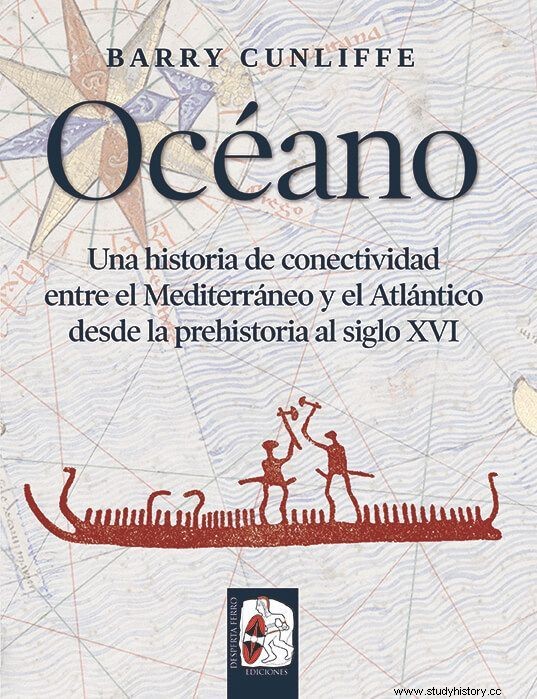
Ocean
For human beings, the sea is, and has always been, an alien space. While the land is familiar, even comforting, the sea is strange and threatening. So why do we jump into it? What made us venture into the unknown? Ocean It is the history –and the prehistory– of Europe narrated from the sea, or, better, from two opposing seas, the Mediterranean and the Atlantic. In this wide-ranging and insightful work, Sir Barry Cunliffe, Emeritus Professor of European Archeology at the University of Oxford, takes us from the earliest attempts to explore the Mediterranean 100,000 years ago to the transoceanic voyages of the 16th century, which they would map the globe.
"A beautifully illustrated magnum opus, offering a fascinating perspective from which to understand the evolution and achievements of mankind."
BBC History Magazine
"A beautifully illustrated magnum opus, offering a fascinating perspective from which to understand the evolution and achievements of mankind."
BBC History MagazineTo buy
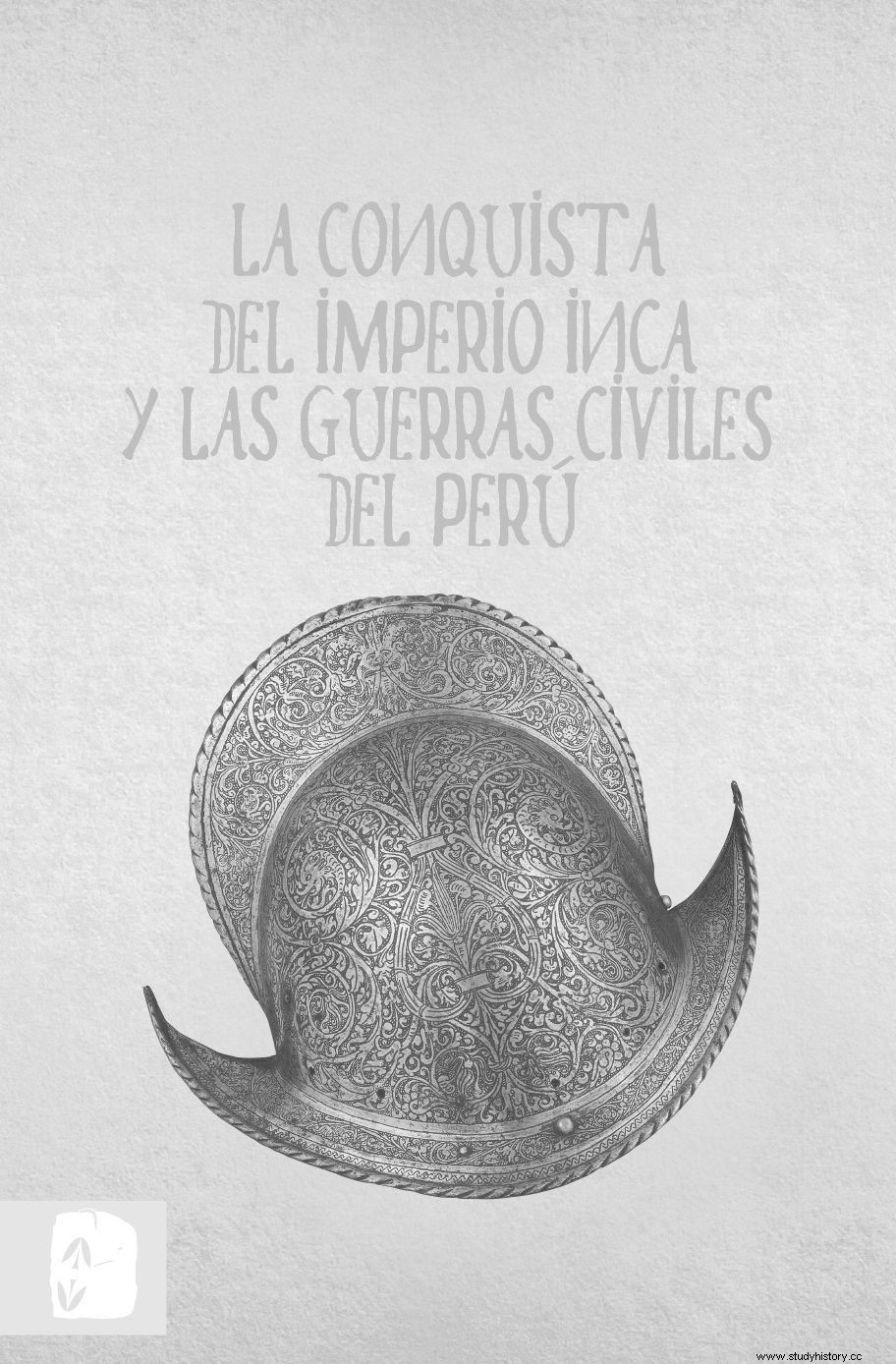
Silver and Blood
The conquest of the Inca Empire at the hands of a handful of Spaniards continues to fascinate for its quixotic and excessive undertaking. How could Pizarro, Almagro and little more than a hundred men subdue the most powerful and best organized State in America, capable of putting thousands of warriors on a war footing, and that had conquered one after another, implacably, their neighbors? ? In Silver and blood. The conquest of the Inca Empire and the civil wars of Peru , Antonio Espino, Professor of Modern History at the Autonomous University of Barcelona, answers the question brilliantly, in a vibrant narration that combines the discovery of an unknown world with the analysis of how the military innovations that were being developed in Europe were adapted to the new continent.
"It is a detailed study of the general framework in which the reported events took place, ranging from the state of the Inca Empire to the relative importance of Pizarro's firearms and his army, veterans of European wars."
Francisco Jose Gomez FernandezHistory of old Iberia
To buy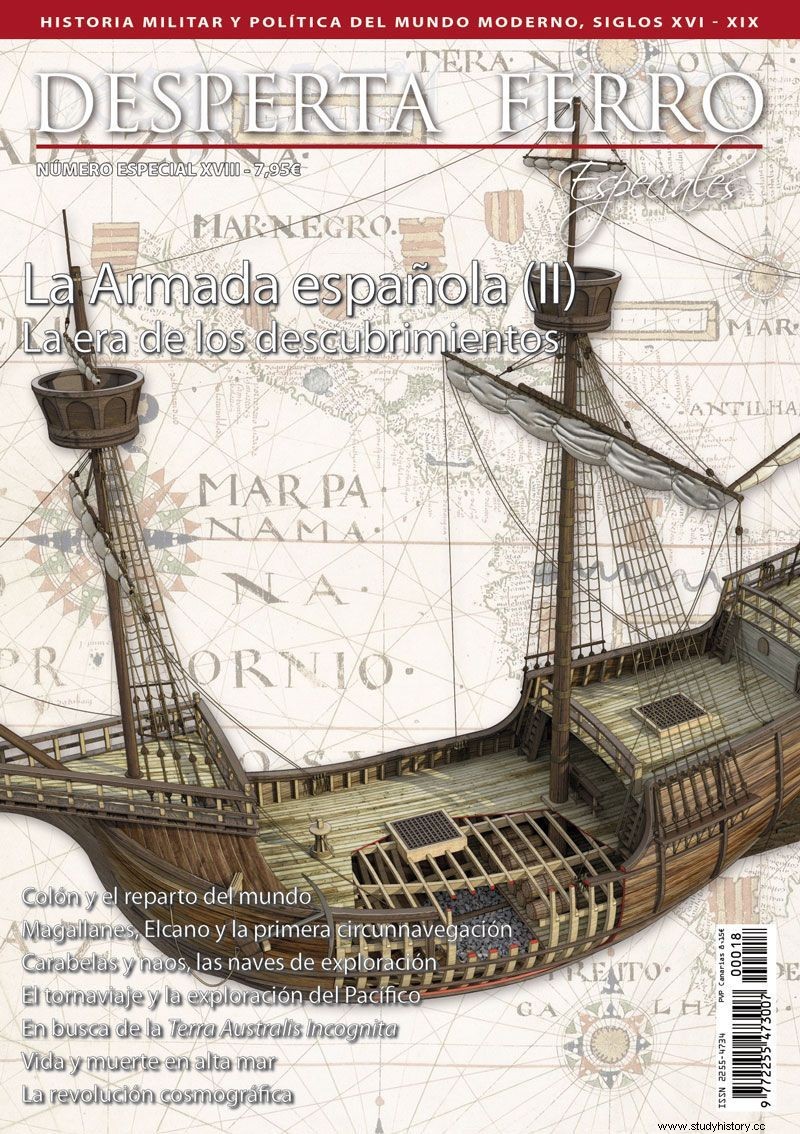
Special Armada II
Now that 500 years have passed since the first circumnavigation around the world, we want to stop and think about what these men must have felt when embarking on such a feat. In order to get a little closer to this fascinating time, you can purchase Special XVII on the Age of Discoveries . Travel into the unknown in authentic shells, step on lands never before discovered and face thousands of dangers.
To buy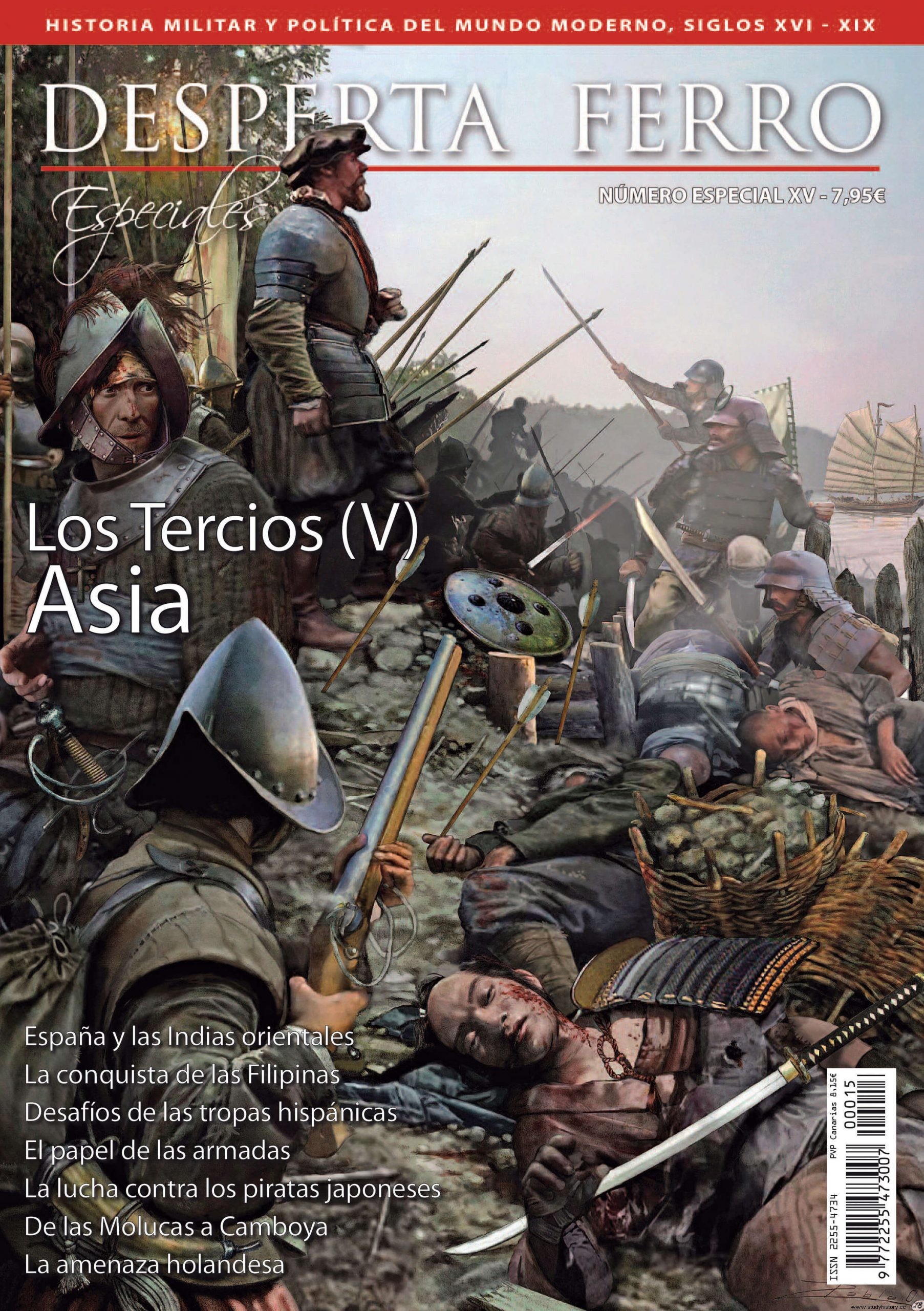
Thirds in Asia
The East Indies , a universe as exotic as it is diffuse in the European imaginary of the Middle Ages, were the chimera that unleashed the Age of Discoveries. In search of the rich spices, seasoned Iberian sailors explored those vast confines, where, as in America, the Treaty of Tordesillas established the limits of the areas of Spanish and Portuguese influence. With its axis in the Philippine Islands, the furthest border of the empire where the sun did not set, the Spain of the Habsburgs established a presence in Asia that would have many ramifications. The governors and soldiers of the Hispanic Monarchy found, on that long border, unprecedented challenges and very different enemies. The extensive geography and the multiplicity of islands also made the naval forces an indispensable element.
To buy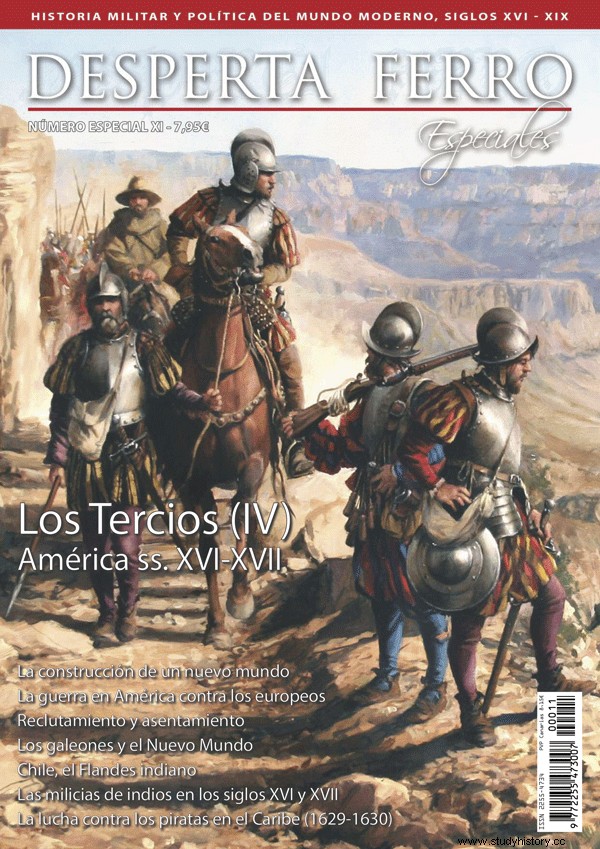
The thirds in America
Although we can only speak of thirds in America properly speaking in the Arauco War, in this volume we travel to the New World to offer you a panoramic and cross-sectional view of the vicissitudes and circumstances faced by the soldiers of the Hispanic Monarchy in American territory during the 16th and 17th centuries. The Indies were the scene of some confrontations that forced the men to adapt to an environment completely different from the one in which they had been trained as soldiers. In the Spanish armies in America, the indigenous element was present from the beginning through the incorporation of contingents of black slaves who, in many cases, managed to emancipate themselves and integrate into the new colonial society.
To buy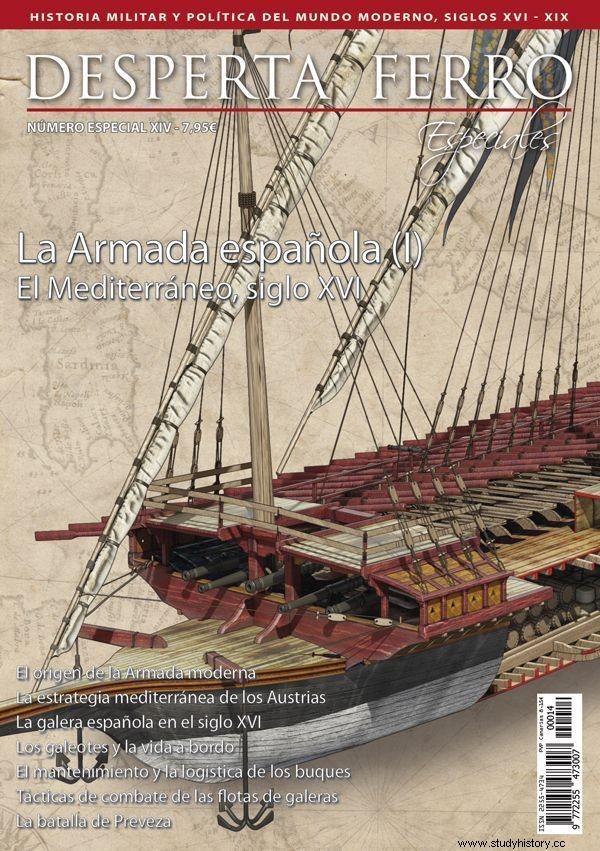
Armada Special I
Naval forces have played a key role throughout the history of Spain. In the Austrian monarchy, with its territories scattered throughout Europe and around the globe, the navy born from the conjunction of the ancient navies of Castile and Aragon was both an indispensable communications vehicle between the different territories and a central element in the Austrian policy. The first special issue of this new series will focus on the Spanish Armada in the Mediterranean during the 16th century to expose the origins of the Spanish Navy and its main features, both at the organizational level – from logistics to financing – and in relation to the typology and characteristics of the quintessential warship of the period, the galley.
To buy